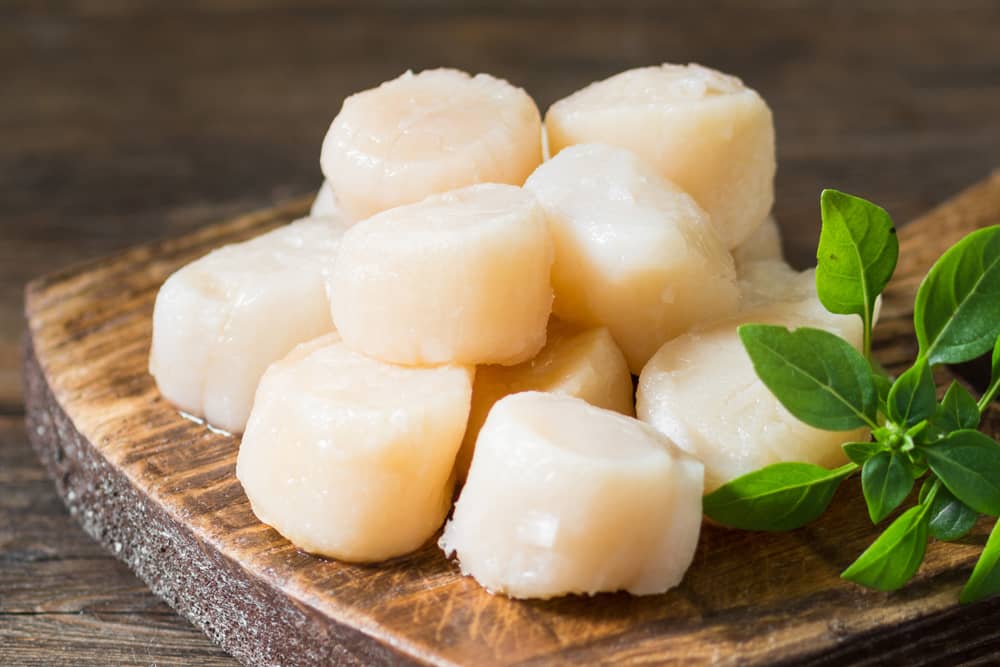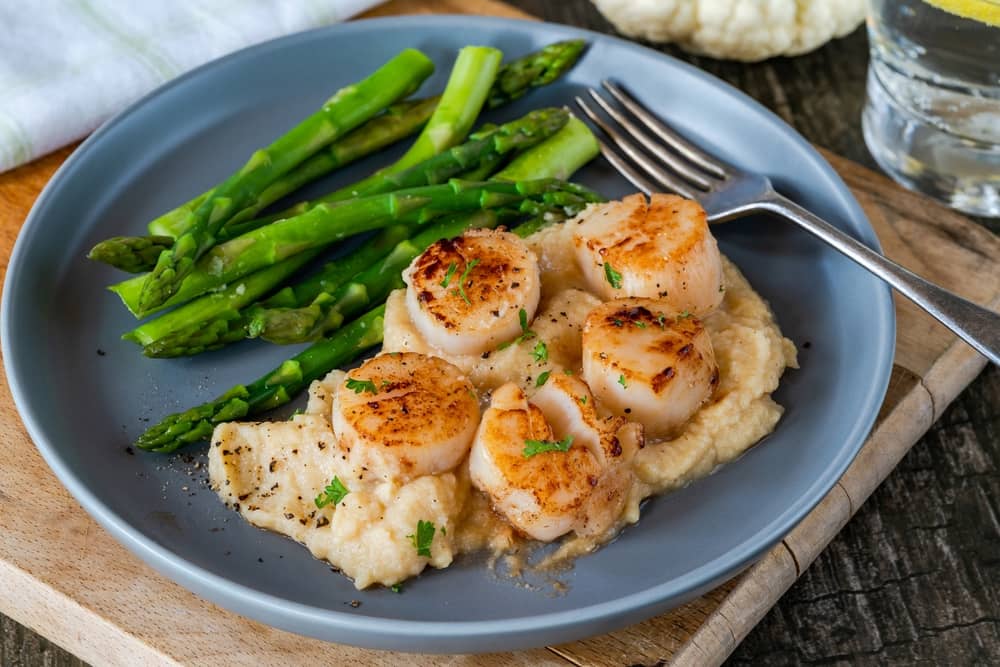
If you’re looking to take your scallop cooking game to the next level, there’s a simple yet often overlooked technique that can make a significant difference in flavor and texture. The secret? Soaking your scallops in milk before cooking them.
While it may sound like an odd thing to do, soaking scallops in milk is a trick long used by professional chefs and experienced home cooks. This seemingly minor step is actually a game changer and transforms your scallops into tender, succulent morsels with a subtly sweet flavor and a perfectly caramelized exterior. In this article, we delve into the reasons behind soaking scallops in milk and exploring the culinary benefits that make it a worthwhile technique.
Benefits of Soaking Scallops in Milk Before Cooking
Milk Serves as a Tenderizing Agent For Scallops
Milk contains natural enzymes like lactic acid that can help break down proteins in scallops. When scallops are soaked in milk, lactic acid tenderizes the meat, resulting in a more delicate and succulent texture. The milk helps to break down the muscle fibers, making the scallops more tender and enjoyable to eat. This tenderizing effect is particularly beneficial if you cook larger and thicker scallops.
Eliminates Mild Fish Odor From Your Scallop
Scallops, like many other types of seafood, can have a mild fishy odor that some people find off-putting. Soaking scallops in milk before cooking can help alleviate this odor. Milk can neutralize or mask the fishy smell, resulting in a milder scent. The milk helps to reduce the intensity of the fish odor, making the scallops more pleasant to cook and easier to consume.
It Helps Remove Sand, and Grit
Scallops are filter feeders, which is why it’s no surprise when they retain small particles of sand or grit in their shells. Soaking scallops in milk can assist in removing these unwanted particles. When scallops are submerged in milk, the sand or grit can loosen and sink to the bottom of the container. This process also makes it easier to remove the scallops from any residual sand or grit before cooking, ensuring a cleaner and more enjoyable eating experience.
How to Soak Scallops in Milk
Step 1: Gather ingredients and tools, including fresh scallops and milk. For quantity, it’s up to you but ideally, the scallops are fully submerged for this technique to work.
Step 2: Inspect the scallops for shells, grit, or tough muscles. Rinse them under cold water.
Step 3: Pat the scallops dry gently using a paper towel.
Step 4: Place the scallops in a bowl or container, ensuring they are fully submerged in milk.
Step 5: Cover the container and refrigerate for 15 to 30 minutes.
Step 6: After the soaking time, drain the scallops from the milk and pat them dry before cooking.
Perfect Scallops Pairings

Scallops pair well with various side dishes. Some popular options include sautéed vegetables, rice or pasta, or citrus-based sauces. These side dishes are known for complementing the delicate flavor of scallops and creating a balanced and satisfying meal.
Additions and Variations
While soaking scallops in milk is a common method, there are other alternatives you can use, especially if you have sensitivities or aversion to milk. For instance, you can use acidic marinades like lemon juice or vinegar, or simply use a salt brine. Creating herb-infused oils for marinating the scallops can also add unique flavors to the scallops.
FAQs
Q: Can I use any type of milk to soak scallops, or is there a recommended type?
A: While whole milk is commonly used for soaking scallops, you can experiment with different types of milk based on your preference or dietary restrictions. Other options such as almond milk, coconut milk, or soy milk can also be used. Remember that different types of milk may impart subtle flavor variations to the scallops, so choose one that complements the dish you are preparing.
Q: How long should I soak scallops in milk for optimal results?
A: The ideal soaking time for scallops in milk is typically between 15 to 30 minutes. This duration allows the enzymes in the milk to work on tenderizing the scallops without overdoing it. However, the soaking time should be extended if you’re working with thicker scallops. It is recommended to monitor the texture and tenderness during the soaking process and adjust the time accordingly.
Conclusion
Soaking scallops in milk before cooking can serve as a tenderizing agent, help eliminate mild fish odor, and aid in removing sand or grit. By following the step-by-step guide and exploring different serving options and variations, you can enhance the quality of your scallop dishes and create a delightful dining experience.

